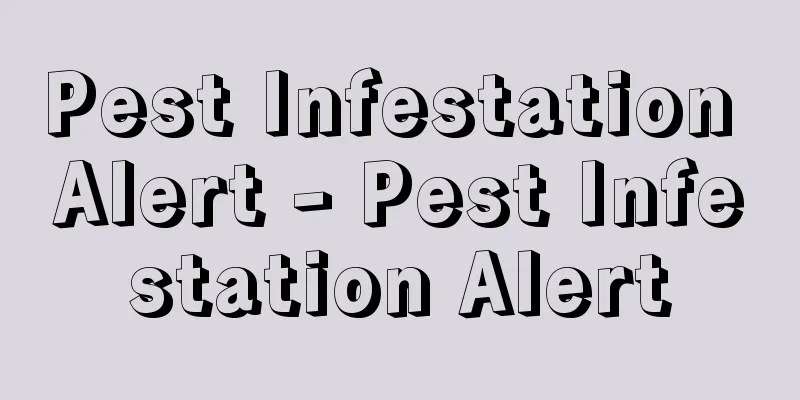Torsion spring - Strepsipteran

|
A general term for insects belonging to the Strepsiptera order of the Insecta class. They are also called Strepsiptera, and sometimes Strepsiptera. All live internally as parasites in the abdomens of other insects, and only adult males have wings. They are so named because their forewings are twisted and club-shaped. Their hindwings are membranous and have several radial veins, but they have weak flying ability. Males are small, measuring 1 to a few millimeters in length, and their antennae have 4 to 7 segments, with at least the third segment having a long lateral branch, making them appear branched. Their legs have no tangents, and their tarsals have 2 to 5 segments, with those with 4 or fewer segments having no claws. Except for a few species that parasitize silverfish, females are internally parasitic throughout their lives, and consist of a thin cephalothorax and a cylindrical abdomen with weak skin. Their body length ranges from a few millimeters to a dozen millimeters, and they lack compound eyes, antennae, and legs. As adults of both sexes do not feed, their mouthparts degenerate significantly. They are found on all continents except the Arctic and Antarctica, and about 450 species in 10 families have been named, including four fossil species from the Tertiary Period of the Cenozoic Era, but there are said to be about 90 unnamed species in Australia. 31 species in 5 families are known from Japan. The emerged male only lives for a few hours to a day, during which time it searches for a host that has been infested by a female and mates. The female has a brood groove opening near the front end of the cephalothorax exposed outside the host body, and receives sperm from here. After mating, thousands or tens of thousands of eggs hatch inside the female's body, and the first-instar larvae escape from the brood groove opening and disperse, reaching the host larva and invading its body to begin a parasitic life. Those that parasitize planthoppers, leafhoppers, stink bugs, and orthoptera have relatively long life spans for males, and there have been many instances of them coming to lights at night, but those that parasitize wasps (bees, wasps) have short life spans and no instances of them coming to lights, probably because they can easily meet females within the host nest. Those that parasitize crop pests such as planthoppers and leafhoppers are valuable as natural enemies. To obtain good male specimens, it is best to raise the infested host and wait for it to emerge. [Kifune Teishi] Source: Shogakukan Encyclopedia Nipponica About Encyclopedia Nipponica Information | Legend |
|
昆虫綱撚翅(でんし)類(目)Strepsipteraに属する昆虫の総称。撚翅類(ねんしるい)ともいい、またネジレバネ類(目)とすることもある。すべてほかの昆虫の腹部に内部寄生し、雄成虫だけにはねがある。その前翅がねじれた棍棒(こんぼう)状であるため、この名がついた。後翅は膜質で数本の放射状の翅脈があるが、飛ぶ力は弱い。雄は体長1ミリメートルないし数ミリメートルと小さく、触角は4~7節で、少なくとも第3節には長い側枝があるので、枝分れしているようにみえる。脚(あし)には転節がなく、跗節(ふせつ)も2~5節で、4節以下のものではつめもない。雌はシミに寄生する数種を除き、一生内部寄生性で、薄板状の頭胸部と、皮膚の弱い円筒状の腹部とからなり、体長は数ミリメートルないし十数ミリメートルで、複眼、触角、脚はない。雌雄とも成虫は食物をとらないので口器は著しく退化する。 北極圏と南極大陸を除くすべての大陸に分布し、新生代第三紀の化石種4種を含め、10科約450種が命名されているが、オーストラリアにはなお約90種の未命名種があるという。日本からは5科31種が知られている。羽化した雄は数時間ないし1日程度の寿命しかなく、この間に雌の寄生した寄主を探して交尾をする。雌は寄主体外に露出させた頭胸部の前端近くに育溝の開口をもち、ここから精子を受け取る。交尾後の雌の体内ではやがて数千ないし数万の卵が孵化(ふか)し、1齢幼虫が育溝の開口から脱出して分散し、寄主の幼虫に到達すると、その体内に侵入して寄生生活に入る。ウンカ、ヨコバイ、カメムシ、直翅類に寄生するものでは雄の寿命が比較的長く、夜間灯火に飛来した例も多いが、ハチ類(ハナバチ、カリバチ)に寄生するものでは、おそらく寄主巣内で容易に雌と出会えるためか、寿命が短く、灯火にきた例はない。ウンカ、ヨコバイなどの作物害虫に寄生するものは天敵としての価値がある。よい雄の標本をとるには、寄生された寄主を飼育して、その羽化を待つのがよい。 [木船悌嗣] 出典 小学館 日本大百科全書(ニッポニカ)日本大百科全書(ニッポニカ)について 情報 | 凡例 |
>>: Twist - Twist (English spelling) torsion
Recommend
Osaki clan
Oshu Tandai (Oshu Tandai). Later, he was a feudal...
Taizo Ishizaka
Born: June 3, 1886 in Saitama [Died] March 6, 1975...
Iimoriyama
[1] [noun] A mountain shaped like a pile of rice. ...
Schop, J.
...Many of the chorales of the 16th century, incl...
Common First Examination - Kyotsuuichijishiken
This unified test was conducted nationwide from 1...
Dispatch money
…The rate of demurrage is generally set at a cert...
Darughachi - Darughachi (English spelling)
An official position in the Mongol Empire and thro...
Ressentiment - Ressentiment (English spelling) French
Ressentiment is a feeling of resentment or revenge...
Ant-grosbeak - Ant-grosbeak
A delicate perennial herb of the Trillium family t...
Horse-dumping ground - Umasuteba
…Therefore, eating horse meat was avoided in the ...
Lambert Lombard
1505‐66 Flemish painter and architect. Born in Liè...
Hidden Markov Model
A probabilistic model that assumes that a certain ...
Karimī merchants (English spelling)
The name of Islamic merchants who were active in t...
Istanbul (English spelling)
A Turkish city on the Bosphorus Strait, an outlet ...
cathodic protection
...A technology that prevents corrosion of metal ...







![Petrus [of Alcantara] (English spelling)](/upload/images/67ccc9b7eaf6c.webp)

